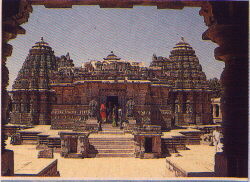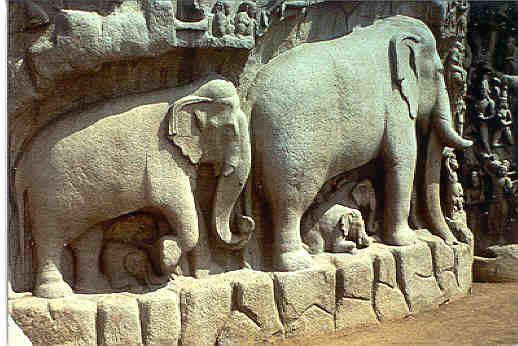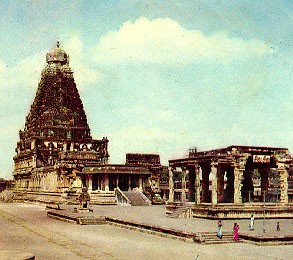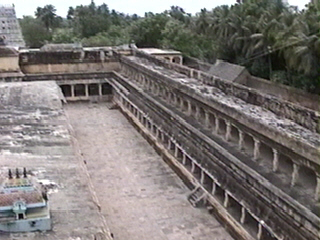Temples in Andhra PradeshAndhra Pradesh has some of the most beautiful
temples of South India. The language of the state, Telugu, considered to be one of the classical languages, is the one in which most devotional songs exist. A recent study by the Anthropological Survey of India has revealed that many Indians follow more than one religion. In most parts of India,
Buddhism, Jainism and
Hinduism flourished at the same time (from the last few centuries of the pre-Christian era to the 10th-11th century AD). Thereafter, Islam also joined the three religions and the interactive culture, architecture and traditions became all the richer for it. Andhra Pradesh presents a wonderful opportunity to observe the sharing of religious spaces. The rise of both
Buddhism and
Jainism in Andhra desa, as in other parts of India, was marked by the many prayer houses they left behind, called differently as stupas and basadis. Muslim rulers built many new mosques and converted some
temple complexes into mosques. Andhra has been able to preserve a wonderful form of
Hinduism too. Many ancient
Hindu texts have been translated into Telugu from Sanskrit since ancient times.
The Chalukyan, the Dravidian, the Nagara, and the Orissan styles of temple architecture can be seen in Andhra Pradesh. The Tirupati is the most visited pilgrim center and the richest
temple. It is an
ancient temple, which has the idol of the Lord Balaji or Venkatachalapati. The Sree Sailam temple is famous because it is one of the 12 jyotirlingas of Shiva. Sree Sailam is near Kurnool and has the idol of the Mallikarjun in an ancient style. It is believed that Adi Shankaracharya composed the Sivandalahiri in this temple. The Alampur Nava Brahma temple has 9 ancient temples were constructed from 7th century onwards. It is the gateway to Sree Sailam. They are dedicated to the Lord Shiva. The Drakashrama is famous for one of the
Pancharama temples. According to the legends, the Shivalingam held by demon Tarak broke into 5 pieces and fell at 5 Pancharama kshetram. Simhachalan means 'hill of lion'. The southern Chola kings and Gangas of Orissa patronized this temple. The
Sree Kalahasti temple is one of the Panchabhoota temples of Shiva. The idol in the temple is the Vayu Lingam. It represents wind out of the five essential elements Agni, Vayu, Aakash, Jalam and Prithvi.
for more info visit website
www.hindustantemples.comhi friends famous web designer in hyd feel click porthfolio
www.picturesque.in


















